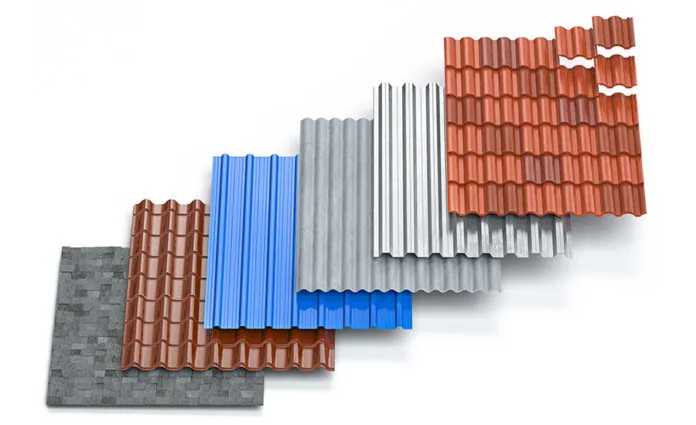
When it comes to building or renovating a home, selecting the right roofing material is crucial. Not only does the roof protect your home from the elements, but it also contributes significantly to its overall aesthetic and energy efficiency. With a myriad of options available, this guide will explore the most popular roofing materials, their advantages and disadvantages, and tips for making the right choice for your property.
1. Asphalt Shingles
Overview
Asphalt shingles are the most commonly used roofing material in North America. They are made from a base of fiberglass or organic materials, coated with asphalt and granules for protection.
Pros:
- Affordability: Asphalt shingles are one of the most cost-effective roofing options.
- Variety: Available in a wide range of colors and styles, making it easy to match any home design.
- Ease of Installation: Quick and simple to install, reducing labor costs.
Cons:
- Lifespan: Typically last 15-30 years, which is shorter than some other materials.
- Weather Resistance: Can be vulnerable to wind and hail damage.
2. Metal Roofing
Overview
Metal roofing is gaining popularity due to its durability and longevity. It can be made from various materials, including steel, aluminum, copper, and zinc.
Pros:
- Longevity: Metal roofs can last 50 years or more with proper maintenance.
- Energy Efficiency: Reflects solar heat, reducing cooling costs in warm climates.
- Environmentally Friendly: Often made from recycled materials and fully recyclable at the end of their life.
Cons:
- Initial Cost: Higher upfront costs compared to asphalt shingles.
- Noise: Can be noisier than other materials during rain or hail without proper insulation.
3. Clay and Concrete Tiles
Overview
Clay and concrete tiles are renowned for their beauty and durability. They are often used in Mediterranean-style homes.
Pros:
- Aesthetics: Offers a unique and attractive look that enhances curb appeal.
- Durability: Can last 50 years or longer with minimal maintenance.
- Fire Resistance: Non-combustible and highly resistant to fire.
Cons:
- Weight: Heavier than other materials, requiring additional structural support.
- Cost: More expensive upfront, both in materials and installation.
4. Slate Roofing
Overview
Slate is a natural stone that provides an elegant and sophisticated look. It’s one of the most durable roofing materials available.
Pros:
- Longevity: Can last over 100 years if properly maintained.
- Natural Beauty: Unique colors and textures add significant aesthetic value.
- Low Maintenance: Resistant to rot, fire, and insects.
Cons:
- Cost: One of the most expensive roofing options.
- Installation: Requires skilled labor for installation, increasing costs.
5. Wood Shingles and Shakes
Overview
Wood shingles (machine-cut) and shakes (hand-split) offer a classic, natural appearance. Cedar is the most popular wood choice due to its resistance to decay.
Pros:
- Aesthetic Appeal: Offers a warm, natural look that can enhance a home’s charm.
- Insulation: Provides excellent thermal insulation properties.
Cons:
- Maintenance: Requires regular maintenance to prevent mold, mildew, and rot.
- Fire Risk: Generally less fire-resistant unless treated with a fire-retardant.
6. Synthetic Roofing Products
Overview
Synthetic roofing materials, such as rubber, plastic, and polymer-based products, mimic the look of traditional materials while offering improved durability.
Pros:
- Lightweight: Easier to handle and install than heavier materials like slate or tile.
- Durability: Often resistant to fading, cracking, and other damage.
- Eco-Friendly Options: Some synthetic materials are made from recycled products.
Cons:
- Aesthetic Limitations: May not have the same natural look as traditional materials.
- Longevity: Depending on the product, lifespan can vary widely.
Choosing the Right Roofing Material
Selecting the best roofing material involves several considerations:
- Climate: Different materials perform better in various climates. For instance, metal roofing is great for areas with heavy snowfall, while clay tiles excel in hot climates.
- Budget: Determine your budget not only for materials but also for installation and maintenance costs.
- Aesthetic Preferences: Choose a material that complements the architectural style of your home.
- Lifespan: Consider how long you want the roof to last and how much maintenance you’re willing to commit to.
- Local Building Codes: Check local regulations that may dictate roofing materials and installation methods.
Conclusion
The roof is one of the most critical components of your home, and selecting the right roofing material is essential for protection, energy efficiency, and aesthetic appeal. From budget-friendly asphalt shingles to the luxurious look of slate, understanding the pros and cons of each option will help you make an informed decision. Always consult with a professional roofing contractor to assess your specific needs and ensure that your investment stands the test of time. With the right roofing material, you can enhance your home’s value and comfort for years to come.







Leave a Reply